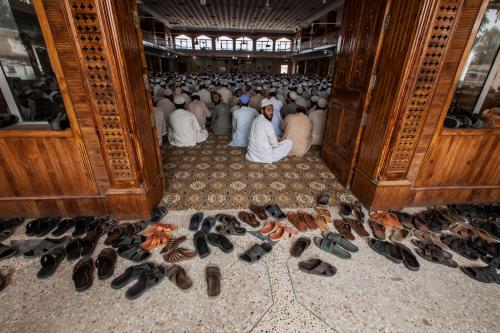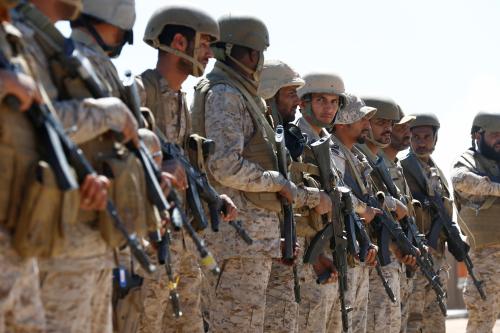The takeover of Aden by South Yemeni separatists last week is a major defeat for the Saudi campaign to restore President Abed Rabbo Mansour Hadi to power. The Hadi government has lost its capital and the south’s largest port. His already weak hold on legitimacy was shattered. The Saudis’ defeat is also a window into the kingdom’s complex history with southern separatists and the independence movement in Aden.
Aden was a critical British colony in the 19th century on the main sailing route from England to India, the crown jewel of the British Empire until 1947. At its peak, Aden was one of the busiest ports in the world. In 1968, the British were literally run out of town by an Arab nationalist movement led by Marxists supported by the Soviet Union. The People’s Democratic Republic of Yemen (PDRY) became the only communist state in the Arab world. The PDRY included Aden as well as the former sheikhdoms of South Yemen that the British had ruled indirectly as protectorates.
For the Saudis, the PDRY was the embodiment of their worst nightmare: a communist state on their southern border allied with the Soviet Union. For two decades, the Saudis supported every plot against the southerners no matter how crackpot. In 1989, Osama bin Laden was fresh from the victory of the mujahedeen in Afghanistan against the Russians, and he proposed to the Saudi leadership that he would lead a jihad to liberate the south from communism. Prince Turki bin Faisal, then head of Saudi intelligence, politely turned him down, arguing that the south was collapsing on its own.
In 1990, the south merged with its much larger neighbor to the north under the leadership of President Ali Abdullah Saleh to create a unified Yemen. The communist regime was bankrupt and its Soviet ally broke. Unity was essential, but it was a poison pill for many southerners. Saleh tilted toward Iraq in the Kuwait crisis later in 1990 and the Saudis expelled a million Yemeni guest workers to punish him.
After the liberation of Kuwait, the Saudis began looking for allies to topple Saleh and turned to the southerners. The Saudis plotted an insurrection led by southern separatists, including former communists, to overthrow Saleh in 1994. Riyadh secretly funded the uprising and purchased black market weapons from Eastern Europe for the insurgents. Then-Defense Minister Prince Sultan bin Abdulaziz and his son, the kingdom’s ambassador to Washington, Prince Bandar bin Sultan led the plotters.
It was a fiasco. The insurgents took Aden briefly before Saleh launched a vigorous counter attack. The Saudi plans were undone in a matter of weeks, the rebellion was crushed, and Yemen was reunited under Saleh. Sultan was humiliated. The Saudis dropped the separatists.
When the Arab Spring came to Yemen in 2011, the separatists joined the campaign to topple Saleh. Riyadh did as well but its preferred candidate was Hadi, himself a southerner who served in the PDRY army and was trained for years in the Soviet Union. He backed a failed coup plot in 1986 against the PDRY regime and fled to the north. In 1994, he stayed loyal to Saleh and was rewarded with becoming defense minister and then vice president. The Saudis saw him as a safe alternative to Saleh.
The separatists have created a civil war within a civil war with Saudi Arabia consistently backing losers.
Instead, Hadi has been a disaster. The Houthis routed his government from Sanaa in early 2015, triggering the Saudi intervention and the war that has created the worst humanitarian catastrophe in the world. Now he has lost control of Aden. The separatists have created a civil war within a civil war with Saudi Arabia consistently backing losers.
The separatists have found a new patron—the United Arab Emirates, which built up their power over the last three years. So, the coalition fighting the Zaydi Shiite Houthi rebels split its loyalties between arch enemies. The failure of coordination and coalition management speaks to the utter incompetence of the Saudi-led military campaign.
Despite their centuries of experience in dealing with Yemen since the start of the Saudi state in the 1740s, Saudi Arabia has had a long history of getting burned in Yemen. The intricacies of Yemeni society and politics have frustrated Saudis more often than not. More frustration is likely ahead.







Commentary
Saudi Arabia and the civil war within Yemen’s civil war
August 15, 2019